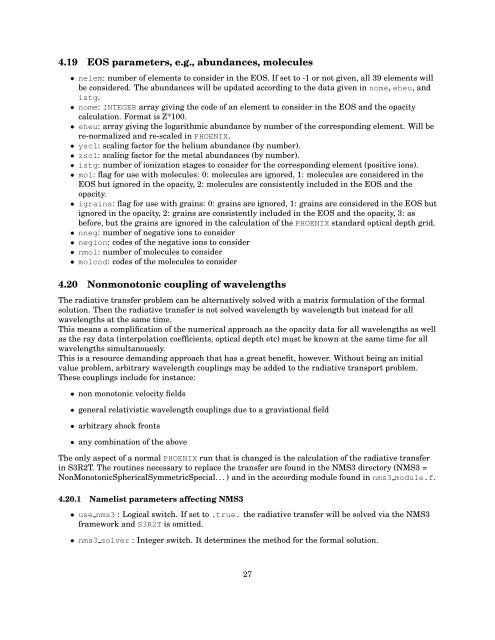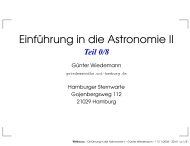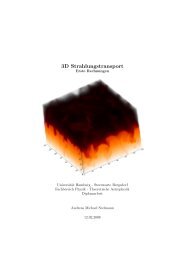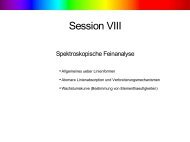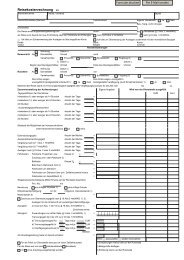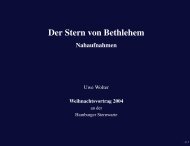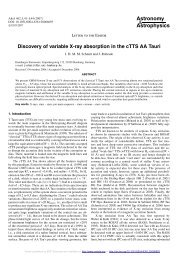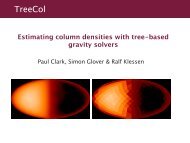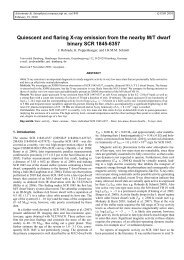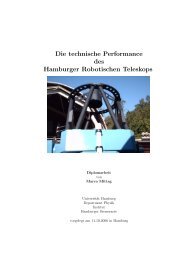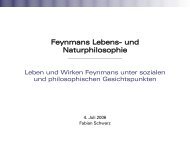Version 15 June 2007 compiled: 11-11-2009 - Hamburger Sternwarte
Version 15 June 2007 compiled: 11-11-2009 - Hamburger Sternwarte
Version 15 June 2007 compiled: 11-11-2009 - Hamburger Sternwarte
You also want an ePaper? Increase the reach of your titles
YUMPU automatically turns print PDFs into web optimized ePapers that Google loves.
4.19 EOS parameters, e.g., abundances, molecules<br />
• nelem: number of elements to consider in the EOS. If set to -1 or not given, all 39 elements will<br />
be considered. The abundances will be updated according to the data given in nome, eheu, and<br />
istg.<br />
• nome: INTEGER array giving the code of an element to consider in the EOS and the opacity<br />
calculation. Format is Z*100.<br />
• eheu: array giving the logarithmic abundance by number of the corresponding element. Will be<br />
re-normalized and re-scaled in PHOENIX.<br />
• yscl: scaling factor for the helium abundance (by number).<br />
• zscl: scaling factor for the metal abundances (by number).<br />
• istg: number of ionization stages to consider for the corresponding element (positive ions).<br />
• mol: flag for use with molecules: 0: molecules are ignored, 1: molecules are considered in the<br />
EOS but ignored in the opacity, 2: molecules are consistently included in the EOS and the<br />
opacity.<br />
• igrains: flag for use with grains: 0: grains are ignored, 1: grains are considered in the EOS but<br />
ignored in the opacity, 2: grains are consistently included in the EOS and the opacity, 3: as<br />
before, but the grains are ignored in the calculation of the PHOENIX standard optical depth grid.<br />
• nneg: number of negative ions to consider<br />
• negion: codes of the negative ions to consider<br />
• nmol: number of molecules to consider<br />
• molcod: codes of the molecules to consider<br />
4.20 Nonmonotonic coupling of wavelengths<br />
The radiative transfer problem can be alternatively solved with a matrix formulation of the formal<br />
solution. Then the radiative transfer is not solved wavelength by wavelength but instead for all<br />
wavelengths at the same time.<br />
This means a complification of the numerical approach as the opacity data for all wavelengths as well<br />
as the ray data (interpolation coefficients, optical depth etc) must be known at the same time for all<br />
wavelengths simultanouesly.<br />
This is a resource demanding approach that has a great benefit, however. Without being an initial<br />
value problem, arbitrary wavelength couplings may be added to the radiative transport problem.<br />
These couplings include for instance:<br />
• non monotonic velocity fields<br />
• general relativistic wavelength couplings due to a graviational field<br />
• arbitrary shock fronts<br />
• any combination of the above<br />
The only aspect of a normal PHOENIX run that is changed is the calculation of the radiative transfer<br />
in S3R2T. The routines necessary to replace the transfer are found in the NMS3 directory (NMS3 =<br />
NonMonotonicSphericalSymmetricSpecial. . . ) and in the according module found in nms3 module.f.<br />
4.20.1 Namelist parameters affecting NMS3<br />
• use nms3 : Logical switch. If set to .true. the radiative transfer will be solved via the NMS3<br />
framework and S3R2T is omitted.<br />
• nms3 solver : Integer switch. It determines the method for the formal solution.<br />
27


